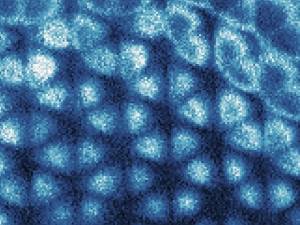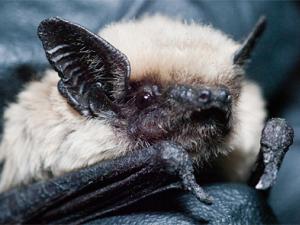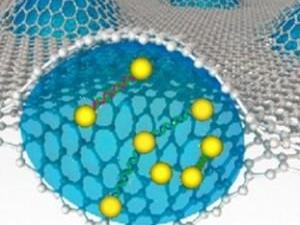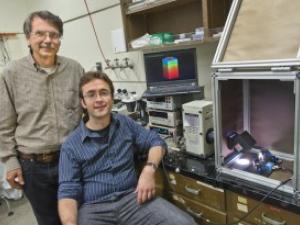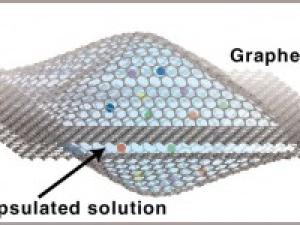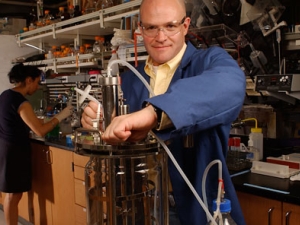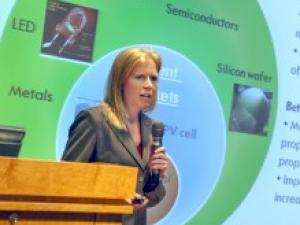

Research Bio
Alex Zettl's research interests are in experimental condensed matter physics. His research group synthesize and characterize novel materials with unusual electronic and magnetic ground states, including low-dimensional and nanoscale structures. Examples are charge- and spin-density-wave conductors, superconductors, giant magnetoresistance materials, fullerenes, and nanotubes. Experimental characterization techniques include structural measurements (TEM, X-ray scattering) and the examination of general transport coefficients (dc and high frequency conductivity, Hall effect, thermal conductivity, thermopower), high magnetic field studies, high pressure effects, and velocity of sound. In addition they operate a high magnetic field cryogenic STM capable of manipulating and assembling individual atoms into interesting structures.
Current Projects
High-temperature superconductors: They synthesize polycrystalline, single crystal, and thin film and superlattice specimens of high-Tc oxide superconductors such as Y-Ba-Cu-O, Bi-Sr-Ca-Cu -O, and Hg-Ba-Ca-Cu-O, and perform isotope effect, intercalation, and magnetotransport studies. The goal is to understand the normal state transport and the mechanism of superconductivity. New superconductors have been synthesized and are being used to test theoretical models. Vortex (Abrikosov and Josephson) dynamics are studied in applied magnetic fields to 17.5 Tesla.
Fullerene-based conductors and superconductors: Fullerenes such as the soccer-ball-shaped molecule C60 are the basis for interesting conductors and superconductors. THey intercalate C60 single crystals with alkali metals and study isotope effects (both alkali and cabon), general transport, magnetotransport, and high pressure effects. The C60 molecules can be polymerized into quasi-one-dimensional chains. These new air-stable conducting crystals display unusual phase transitions that they examine via conductivity, specific heat, x-ray scattering, and STM.
Nanotubes: It is possible to arrange carbon atoms into near-perfect nanotubes structures with diameters on the order of 10Å to 1000Å and lengths over 100µm. Theoretically, these tubes are the strongest possible fiber, and they are predicted to have unusual electronic properties (some are conductors, others insulators). They fabricate carbon nanotubes and measure their structure via TEM and electrical and mechanical properties using other techniques. It is possible to fill the tubes with other atoms, and to collapse the tubes into flat, flexible ribbons. In addition, it has been predicted that nanotubes containing boron and nitrogen, BxCyNz, may have many properties superior to carbon nanotubes for applications purposes. They synthesize such tubes and study their properties.
Giant magnetoresistance materials: Materials such as La-Ba-Mn-O are semiconductor-like at high temperature and metal-like (with magnetic ground states) at low temperature. In the intermediate temperature regime (typically somewhat below room temperature), they may display an unusually large negative magnetoresistance. They study the magnetoresistance and other transport properties in order to understand the conduction and scattering mechanisms.
Atomic-scale manipulation: They have designed and constructed a unique high-speed, high-field, cryogenic UHV scanning tunneling microscope capable of assembling and measuring the electronic properties of nanoscale structures, including superconductors and nanotubes.
Research Expertise and Interest
physics, condensed matter physics, fullerenes, condensed matter experiments, characterize novel materials with unusual electronic and magnetic ground states, low-dimensional and nanoscale structures, superconductors, giant magnetoresistance materials, nanotubes, graphene, boron nitride nanostructures, neural probes, NEMS (nanoelectromechanical systems)
In the News
Physicists snap first image of an ‘electron ice’
A graphene innovation that’s music to the ears
Major advance in solar cells made from cheap, easy-to-use perovskite
Bats do it, dolphins do it. Now humans can do it too.
UC Berkeley physicists have used graphene to build lightweight ultrasonic loudspeakers and microphones, enabling people to mimic bats or dolphins’ ability to use sound to communicate and gauge the distance and speed of objects around them.
3D Dynamic Imaging of Soft Materials
Berkeley Lab researchers apply transmission electron microscopy through unique graphene liquid cell
Berkeley Lab Technology Could Open Door to More Widespread Solar Energy Devices
A technology that would enable low-cost, high efficiency solar cells to be made from virtually any semiconductor material has been developed by researchers with the U.S. Department of Energy (DOE)’s Lawrence Berkeley National Laboratory (Berkeley Lab) and the University of California (UC) Berkeley.
First atomic-scale real-time movies of platinum nanocrystal growth in liquids
Berkeley Lab researchers have developed a technique for encapsulating liquids of nanocrystals between layers of graphene so that chemical reactions in the liquids can be imaged with an electron microscope.
Pilot program to bolster biophysical sciences’ innovation pipeline
The new Bakar Fellows Program is designed to help early-career Berkeley faculty commercialize promising research discoveries.
Scientists benefit as much as students from "Cleantech to Market" program
Launched as a pilot project at Berkeley Lab, the Cleantech to Market program is finishing its first semester as an official class at UC Berkeley's Haas School of Business, and it's safe to say the students learned more than they expected on how to take a technology from the laboratory to the marketplace. What was less expected is how much the scientists got out of the program.

